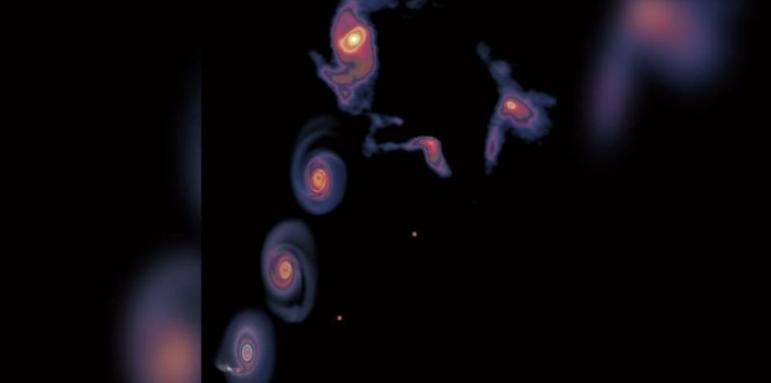An astronomical team has discovered a strange object in the center of the Milky Way, resembling a miniature spiral galaxy orbiting a massive star, ScienceAlert reports, citing a publication in the journal Nature Astronomy.
The discovery was made with the help of the ALMA microwave telescope (ALMA – Atacama Large Millimeter / submillimeter Array) in the Chilean Atacama Desert.
The star is 26,000 light-years from Earth and is about 32 times more massive than the Sun. It is located in a huge disk of rotating gas, called a “protostar disk”. The disk is about 4,000 astronomical units wide (1 astronomical unit equals the distance between the Earth and the Sun).
Such discs are widespread in the universe. They “feed” the stars by helping young luminaries gain mass.
However, the object observed in the Milky Way is quite unusual. It looks like “a tiny galaxy that orbits dangerously close to the center of our galaxy,” astronomers said.
Observations show that the movement of the disk hardly gave it its natural spiral shape. According to researchers, he rather survived a collision with another space object.
Scientists have made computer simulations and found that this cataclysm probably occurred about 12,000 years ago. The large object has changed the shape of the dust cloud to such an extent that clearly visible spiral “sleeves” have appeared in it.
“Because there are millions of times more stars in the center of the Milky Way than in our part of the galaxy, such events probably occur there quite regularly,” said Lu Xing, co-author of the study at the Shanghai Astronomical Observatory in China.









